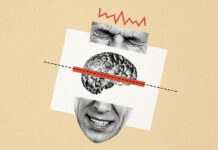In a report conducted by UK-based researchers, Jesus Perez and colleagues, the authors compiled literature from prior studies in order to understand the social epidemiology of psychosis to detect “high risk” individuals and make recommendations for improving services amongst this group. Their findings indicate that rates of psychosis tend to be higher in ethnic minority groups and in individuals from lower socioeconomic backgrounds.
Despite the fact that psychotic conditions can be a major concern for individuals, their families, and their providers, work towards understanding the full picture of the condition, as well as developing interventions targeting it, has moved slowly. The benefits of newer pharmacological therapies for psychosis remain uncertain and the deleterious effects of older antipsychotics have been previously established.
Even the more evidence-based and effective psychotherapies are not widely available for those who need them. Among other innovative interventions surging in Europe, the National Health Service (NHS) has led the way in home treatment services for individuals with psychotic conditions, and they continue to work on early intervention services, which includes understanding the determinants of psychosis.

Researchers compiled data from population and cohort-based studies, as well as clinical surveillance of electronic records in specific regions of England. Through their extensive compiled results and recommendations the researchers aimed to provide education, investigate determinants of psychosis, and utilize their predictions to guide policy.
The study found higher rates of psychosis than the incidence rates reported by the UK Department of Health. Psychosis rates, they found, were higher in men and they tend to decline with age. Rates were also higher in black and other ethnic minority groups, in both rural and urban settings. In addition, rates were higher in individuals facing so-named socioenvironmental adversities, and in neighborhoods with multiple deprivations.
“The sociodemographic characteristics of incidence rates were also similar to those of more urban studies, including higher rates in black and ethnic minority groups, indicating that psychosocial and other phenomena contributing to this variation are not confined to urban populations.”
A recent study published last month in the American Journal of Psychiatry found similar results, also in England. The authors reported that the highest rates of psychosis “were restricted to urban and deprived communities, suggesting that a threshold of socioenvironmental adversity may be necessary to increase incidence.” Their results specifically indicated that rates of psychosis were higher for men and women under 20 years old, individuals from ethnic minority groups, lower socioeconomic status, and “deprived” neighborhoods. In communities with access to early intervention, the incidence of psychosis was lower.
As the researchers working on both of these studies observed, these results have implications for both getting a clearer picture of psychosis, as well as who receives treatment for it. This research, with its focus on social epidemiology, has the potential for influencing how appropriate services should be distributed.
****
Perez, J., Russo, D. A., Stochl, J., Shelley, G. F., Crane, C. M., Painter, M., … & Jones, P. B. (2016). Understanding causes of and developing effective interventions for schizophrenia and other psychoses. Programme Grants for Applied Research, 4.2. (Abstract)















Very good, useful study. Re: “The HR (people at high risk) mental state has much in common with depression and anxiety; very few people transitioned to full psychosis over 2 years, in line with other recent evidence.” What would have occurred if these HR folks had been pre-emptively been given AP’s as has been the push for over a decade – few transition = AP’s work – in contrast, few transition because FEW TRANSITION. The next sentence of this study is great “This new understanding will help people at HR receive appropriate services focused on their current mental state.” i.e. help them with the problems they have, NOT what you think they might “get”.
Report comment
“What would have occurred if these HR folks had pre-emptively been given AP’s as has been the push for over a decade -” What happens when you give a non-psychotic person an antipsychotic is that, that person can become “psychotic,” via neuroleptic induced anticholinergic toxidrome poisoning.
https://en.wikipedia.org/wiki/Toxidrome
It’s amazing to me that the psychiatric industry collectively believes they have some sort of psychic abilities, and should be pretreating people for something “they might ‘get.'” It’s like the pre-crime sci-fi crap in Minority Report. How insane can the psychiatric industry get?
Just an FYI, my psychologist thought a dream query was “psychosis,” according to her medical records. Since that psychologist and many psychiatrists believe dreams are “psychosis,” this makes the definition of “psychosis” quite meaningless, since everyone dreams. Perhaps there should be a less inclusive definition for the word “psychosis”?
And since “the prevalence of childhood trauma exposure within … individuals diagnosed with psychotic or affective disorders … reaches 82% (Larsson et al., 2012).” It seems “psychosis” has become a catch all phrase used by those in the psychiatric industry, who would rather profiteer off of tranquilizing child abuse victims to shut them up, rather than actually deal with the unfortunate reality that we have a societal child abuse problem.
But I’m glad the psychiatric industry is starting to garner insight, with their “new understanding,” of the importance of providing “appropriate services focused on [a person’s] current mental state.”
Report comment
Well, maybe they could if they used something like niacinamide or inositol hexanicotinate at a subtherapeutic dose level at around 1g/day. They could even do this double-blind. The problem is that you’d have to deal with crazed investigators, driven into psychotic fury by the very thought that a simple nutrient might have a potential benefit for their high risk patients.
Report comment
Well, they wouldn’t be working because that would interrupt their sleep time (12+ hrs./day?).
Report comment
Social marginalization is what causes these effects which we call mental illness, like psychosis.
Rather than doing studies to see who is at risk, like we were treating a disease epidemic, how about looking at how to remedy social marginalization? Most of it is a combination of familial child abuse and economics.
Nomadic
Report comment
One set of people who are at risk of experiencing psychosis are a subset of those placed on SSRI antidepressants which can cause mania and psychosis in some people. This risk is even more fortified if they have a close biologically related family member who has experienced antidepressant induced mania.
Report comment
You’re right. You can probably identify them with quantitative psychological tests like the Hoffer Osmond Diagnostic because they’re likely to have high scores, indicative of a comparatively high numbers of perceptual distortions, as well as having family members prone to bad reactions to antidepressants (should you be able to do a decent history of family members).
Report comment
Interestingly enough, there’s a similar kind of familial relationship involving prolonged reactions to LSD.
Report comment